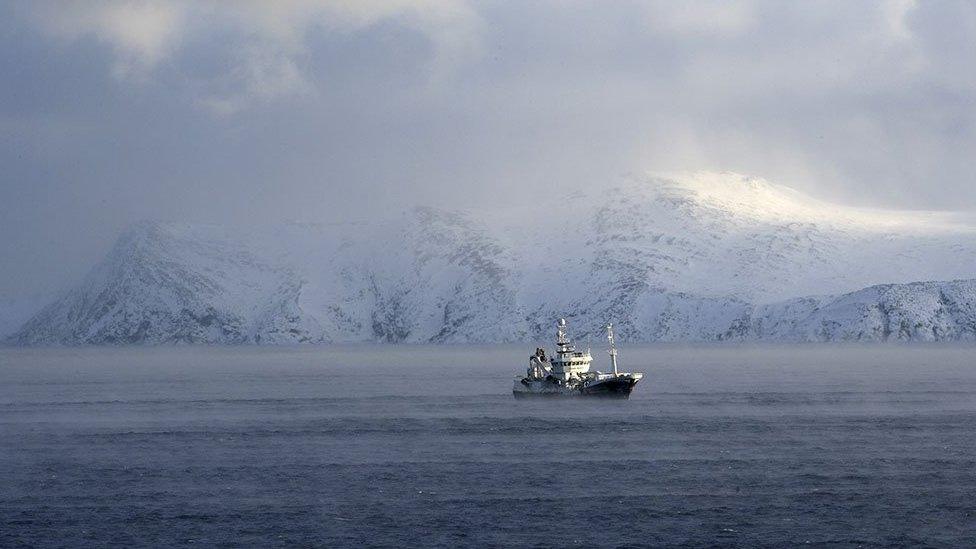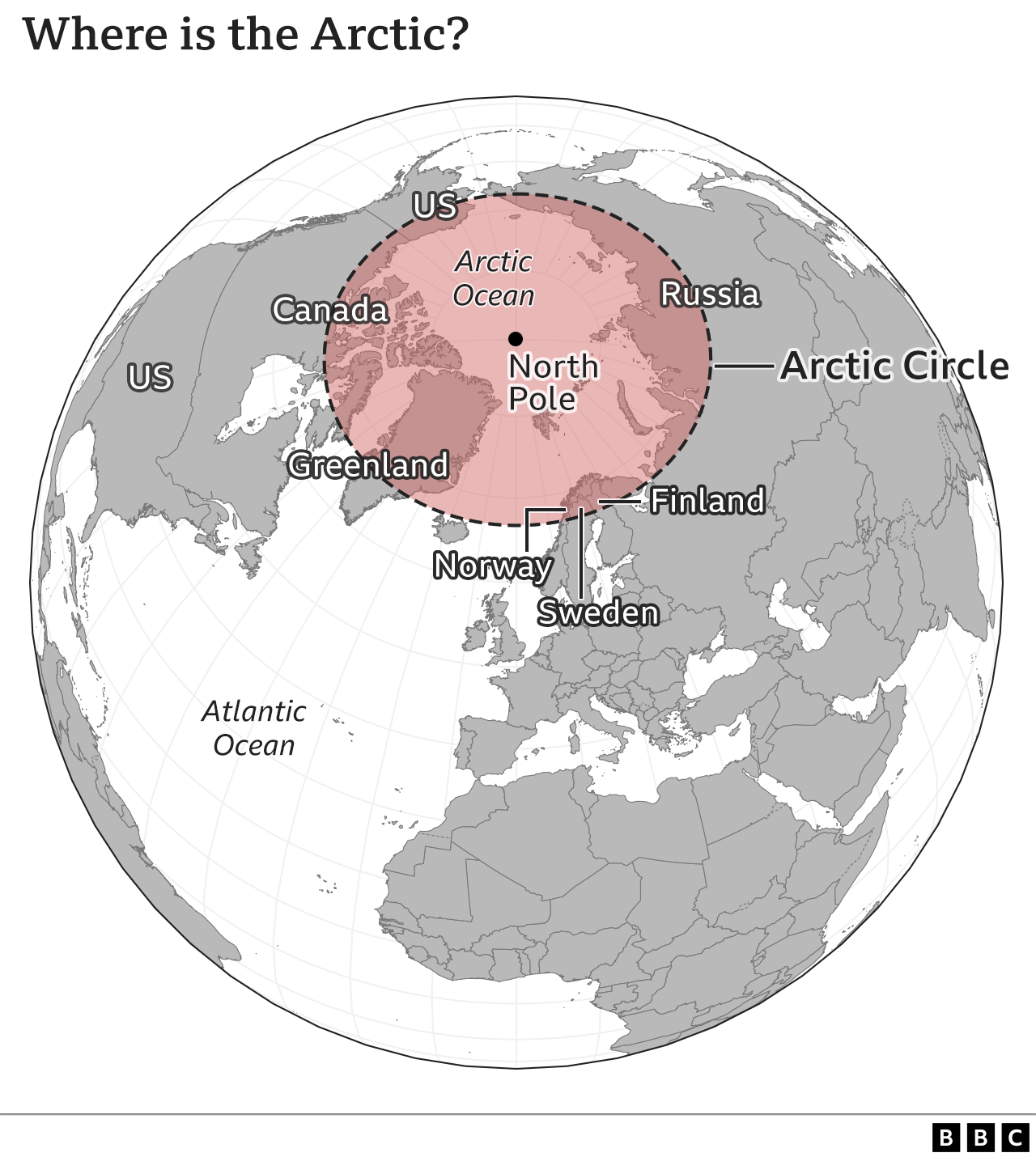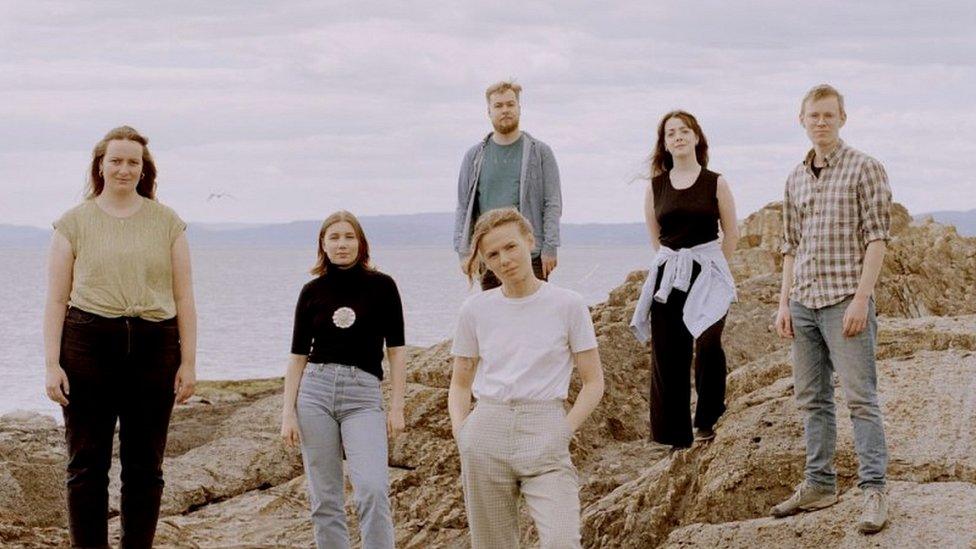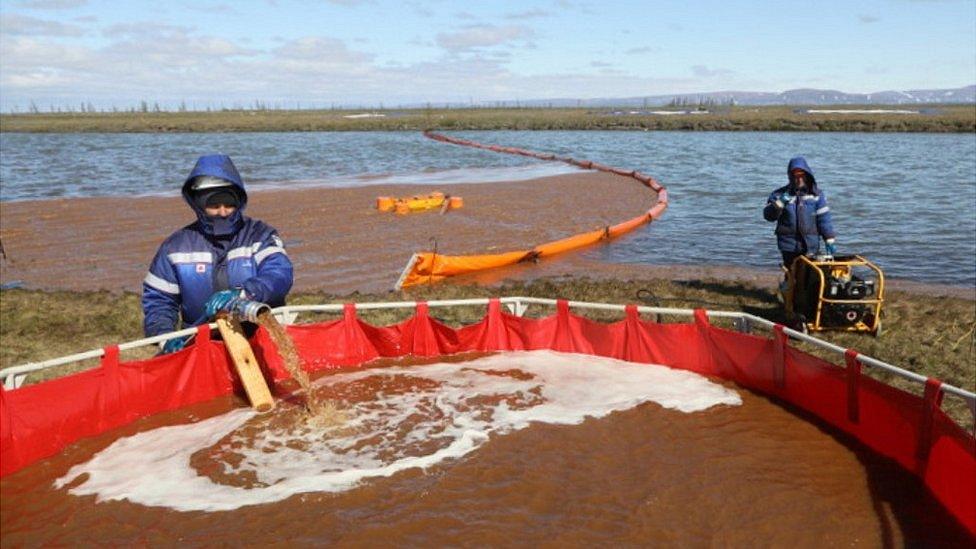Who owns the Arctic and should they drill for oil and gas?
- Published

A court case is under way over whether energy companies can drill for oil and gas in the Arctic.
Environmental activists are taking Norway's government to the European Court of Human Rights (ECHR) because it is allowing exploration. It's being seen as a test case for how much of the area's natural resources can be exploited.
Who owns the Arctic and how much oil and gas is there?
The Arctic Circle may contain 160 billion barrels of oil and 30% of the planet's undiscovered natural gas, the US Geological Survey estimates.
States with territory and territorial waters within the Arctic Circle are Norway, Russia, Sweden, Finland, Iceland, the US, Canada and Denmark (which owns Greenland).
Because the Arctic is mostly sea there is no international treaty protecting its environment from economic development, as there is for the Antarctic.
Global warming means more of the ice covering the northernmost region of the world has melted, making drilling easier.

What's the Norway court case about?
Since 2016 Norway - Western Europe's largest oil producer - has granted a number of licences to explore for oil and gas in the Barents Sea, inside the Arctic Circle.
In 2021, six young Norwegians and two environmental groups, Greenpeace Nordic and Young Friends of the Earth, brought a case to the ECHR against the Norwegian government's policy.
The activists argued that "by allowing new drilling in a climate crisis, Norway is in breach of fundamental human rights".
They say that drilling in the Arctic could pollute the polar ice sheets and cause them to melt at a faster rate.

The six activists trying to ban oil and gas drilling in Norway's Arctic seas. Lasse Eriksen Bjoern is centre, top. Mia Chamberlain is second on the right.
They have cited Article 2 of the European Convention of Human Rights, which protects the right to life, and Article 8, which protects the right to a family life and home.
"By complaining," said campaigner Mia Chamberlain,, external "we might have a chance of stopping this catastrophic oil drilling".
Lasse Eriksen Bjoern, an activist from the indigenous Sami people of northern Norway, told Reuters that drilling could damage Arctic fisheries and endanger their way of life., external
Three Norwegian courts rejected their case, but the ECHR is taking it seriously and asked Norway's government to make its defence.
On 26 April it replied, saying that Norway is already co-operating with international efforts to tackle climate change and is aiming to achieve net zero carbon emissions by 2050.
It said it would be harmful to Norway's society to curb oil and gas production before more reliable renewable energy is available.
The ECHR is considering making this an "impact case", meaning that its ruling in this case could set a precedent for similar cases throughout the European Union. If it does so, it could make a ruling in the next few months.
Who else is drilling in the Arctic?
Russian oil companies have been operating in the Arctic for more than a decade. Two years ago, there was a major oil spill in its Arctic territory.
The US is proposing to let oil companies drill in northern Alaska, despite the huge Exxon Valdez oil spill in Alaska in 1989.

The spill from a metal works at Norilsk threatened a huge, pristine area of Arctic wilderness
What rights do countries have in the Arctic?
All countries with territory in the Arctic Circle have rights over the sea-floor close to their own shores.
They can also establish exclusive economic zones, stretching up to 200 nautical miles (370km) from shore., external
In these zones, they have the right to fish, build infrastructure and extract natural resources.
Countries can extend these zones, if they can show that their land masses go further into the sea.
There is currently a dispute over who owns a 1,070-mile long (1,721 km) chain of undersea mountains called the Lomonosov Ridge, which runs through the North Pole.
Canada, Russia and Greenland all claim it as their own. Whoever eventually succeeds can also claim the 55,000 square miles of sea around the North Pole.
In 2007, Russian explorers alarmed its Arctic neighbours by planting its national flag on the seabed, external at the North Pole.

Have environmental activists won similar cases?
Environmental activists have increasingly been using the courts to force governments and firms to take a greener line.
Last year, a Dutch court told the energy firm Royal Dutch Shell that by 2030 its emissions must be 45% lower than 2019 levels - a much bigger cut than the company had initially said it would make. The case was brought by Friends of the Earth.
In 2018, Colombia's supreme court ordered the government to take urgent action to stop deforestation of the Amazon rainforest,, external saying it deprived children of the right to a healthy environment.